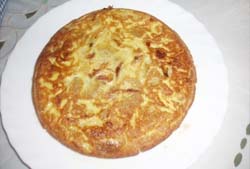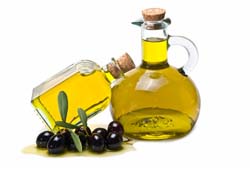Spanish Cooking
The Spanish kitchen is colourful, exciting and delicious. With delicacies and methods stretching back hundreds of years, Spain has a gastronomical history that stands out in Europe and around the world and everyone wants to sample what the country has to offer. From the famous Mediterranean diet to Catalonian specialities variety is in abundance, and if you’re lucky enough to be spending an extended period of time in the country then make sure you sample them all!
The Spanish menu is dominated by seafood, meat and rice of different flavours and textures, though you won’t have to look far to find something doused in garlic and olive oil. Regional flavours are also of particular importance and, of course, some dishes are only available in certain parts of the country. Location and history have principal influence over the Spanish menu and taste and style can vary significantly depending on your proximity to a coast or city.
National Dishes
Of course, many dishes are recognised across Spain as representatives of national food that visitors regard as traditionally Spanish and are available country-wide. Paella is the most recognisable of these and is possibly the most popular Spanish dish amongst foreign visitors. Prepared using rice and any leftover meat, fish and vegetables, the dish is not only practical but it is also accessible and varied depending on taste and preference. When prepared from scratch, it is common for restaurants to inform customers of at least a half-hour waiting time which means that the paella is cooked fresh and in the traditional way. It is usually also prepared to a portion size that would typically be shared between a family, so if you’re in the mood for paella, it’s always best to dine in a group.
 Spanish tortilla is also a favourite amongst visitors and Spaniards alike, mainly due to its simple ingredients and typical taste, making it a perfect snack or tapas. Tortilla is traditionally prepared using egg and potato and then fried in olive oil giving it a thick, mushy texture. There are currently many varieties available depending on the bar or supermarket you buy from with some recipes including onion, spinach and ham.
Spanish tortilla is also a favourite amongst visitors and Spaniards alike, mainly due to its simple ingredients and typical taste, making it a perfect snack or tapas. Tortilla is traditionally prepared using egg and potato and then fried in olive oil giving it a thick, mushy texture. There are currently many varieties available depending on the bar or supermarket you buy from with some recipes including onion, spinach and ham.
Meat plays a particularly important role in the Spanish kitchen and many Spaniards consider a dish without meat to be quite strange indeed. Stew is a favourite across the nation with regional recipes and ingredients varying depending on which part of the country you happen to be in or even which family is cooking for you! Cocida is a prime example of this, principally from Madrid but now popular throughout the country. Meat can also be a main ingredient in Spain’s most famous dish, paella. One thing you will most definitely spot during your time here are the thousands of cured legs of Iberian ham hanging from ceilings and being carved fresh off the bone in tapas bars and restaurants. Ham such as this is a delicacy across the country and is usually served on fresh bread or as tapas; you can even buy legs of well-cured ham whole.
Along the coasts of Spain, and even in the larger cities inland, seafood is popular and widely available and you can hardly blame the Spaniards from being amongst the highest consumers of seafood in Europe. If you enjoy this kind of cuisine then you will most definitely be spoilt for choice! From cod to octopus, you will find that every Spanish menu is largely dedicated to this national favourite and with Spain being surrounded by the Mediterranean Sea, the Atlantic Ocean and the Bay of Biscay, different tastes and flavours can be found wherever you are. Restaurants dedicated entirely to fresh seafood aren’t rare but most bars and restaurants also offer fish in tapas form along with typical meats. A favourite delicacy across Spain is calamares which are deep-fried squid rings sprinkled with fresh lemon juice.
 One of the most essential ingredients in Spanish cooking is olive oil and olives are also a staple part of most meals or snacks in Spain. Spain produces the most olive oil and olives in the world, with most of the olive groves in the country thriving in the regions of Andalucía and Catalonia, producing a range of colours and flavours. Compared with other oils and lards, olive oil is a much healthier cooking option and it forms a principle ingredient in the famous Mediterranean Diet as well as being said to have numerous health benefits. Additionally, bread is often served with olive oil as an appetizer in most restaurants.
One of the most essential ingredients in Spanish cooking is olive oil and olives are also a staple part of most meals or snacks in Spain. Spain produces the most olive oil and olives in the world, with most of the olive groves in the country thriving in the regions of Andalucía and Catalonia, producing a range of colours and flavours. Compared with other oils and lards, olive oil is a much healthier cooking option and it forms a principle ingredient in the famous Mediterranean Diet as well as being said to have numerous health benefits. Additionally, bread is often served with olive oil as an appetizer in most restaurants.
Vegetables also form a staple ingredient in Spanish cuisine, especially dishes containing pepper or tomato. They can be found in typical dishes such as paella and stew as well as being served alone or with cheese. Vegetables also serve as the main ingredient for a very popular dish called gazpacho which is basically a cold, vegetable soup, usually containing pepper and plenty of tomatoes. As unnatural as cold soup may seem, gazpacho is a national dish in Spain and appears on most tapas and restaurant menus. Click here for some typical Gazpacho recipes.









